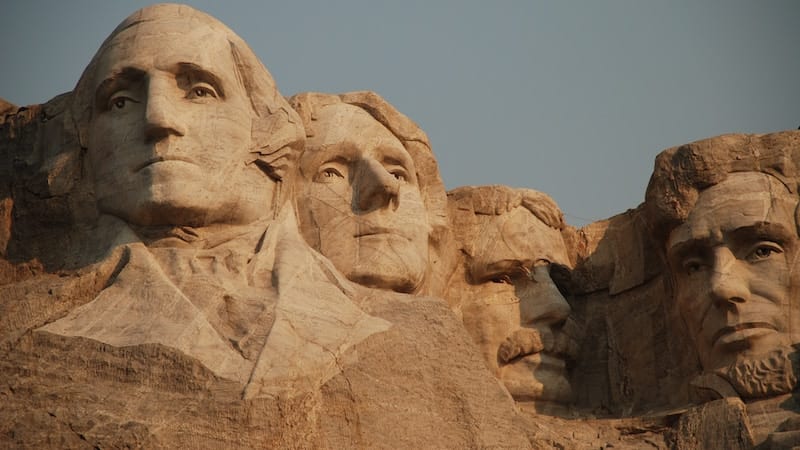When Presidents’ Day rolls around, it’s easy to reach for a standby lesson plan on Abe Lincoln’s log cabin. But the holiday also presents an opportunity to go deeper and examine the traditional narratives surrounding past presidents. We know that presidents were not infallible historical characters, so here are some ways to keep it more honest for our students.
Ditch the traditional activities.
Typical Presidents’ Day classroom activities include word searches, coloring pages, and mazes that help Teddy Roosevelt find his national park. These lessons fail to delve into who these presidents were as leaders, much less as people. When lessons are content-driven, they tend to focus on the “fun” stuff, like presidential nicknames, pets, or tales of childhood mischief. Consider engaging with presidential history at a deeper level by reading books about presidents , examining their speeches, and discussing their legacies.
Try this! Share “Andrew Jackson Revisited” with your students and invite them to consider how those facts contrast with his reputation as a man of the people.
Avoid mythologizing past presidents.
In the classroom, we tend to rely on stories that put presidents on a pedestal. We portray Washington as the boy who could not tell a lie. In an era of fake news, it’s even more vital to separate fact from fiction. Real talk: George Washington never chopped down his father’s cherry tree.
Try this! Have students fact-check popular stories about presidents. Did Lincoln really scribble the Gettysburg Address on the back of an envelope?
Teach uncomfortable truths.
Frankly, it’s irresponsible to teach American history outside the context of slavery. The reality is that 12 U.S. presidents (that’s one in four) owned slaves, and eight of those held enslaved people while in office. Lincoln initially upheld slavery, stating, “I have no purpose, directly or indirectly, to interfere with the institution of slavery in the States where it exists. I believe I have no lawful right to do so, and I have no inclination to do so.” His views evolved as it became clear that preserving the Union and maintaining the institution of slavery were mutually exclusive.
Try this! Have students listen to poet Clint Smith III’s letter to past presidents who owned slaves.
[contextly_auto_sidebar]
Present past presidents holistically.
It’s important for students to see presidents as whole people. You can honor presidential accomplishments while still recognizing that the presidents themselves were imperfect. It’s a “both/and” situation. A courageous and prudent leader, George Washington is rightly recognized as the Father of his Country. He also had mistresses and owned more than 300 slaves. Franklin D. Roosevelt lifted the country out of the Great Depression. However, he also once tried to pack the Supreme Court to push through New Deal legislation.
Try this! Read aloud Thomas Jefferson: Life, Liberty, and the Pursuit of Everything. It’s a great book that recognizes Jefferson as a remarkable, yet complicated man.
Encourage students to think critically.
When students stop thinking about presidents as perfect people, they’re better able to look at them objectively. Have them analyze primary source documents and formulate their own opinions about the successes, challenges, and characters of past presidents. As future voters and citizens, they’ll need those skills to evaluate the individuals who will lead this country in the future.
Try this! Read A Colored Man’s Reminiscences of James Madison and have students draw conclusions about the fourth president.
How do you teach history in a socially conscious way? Come share in our WeAreTeachers HELPLINE group on Facebook. Plus, check out our favorite Presidents’ Day activities for the classroom.


